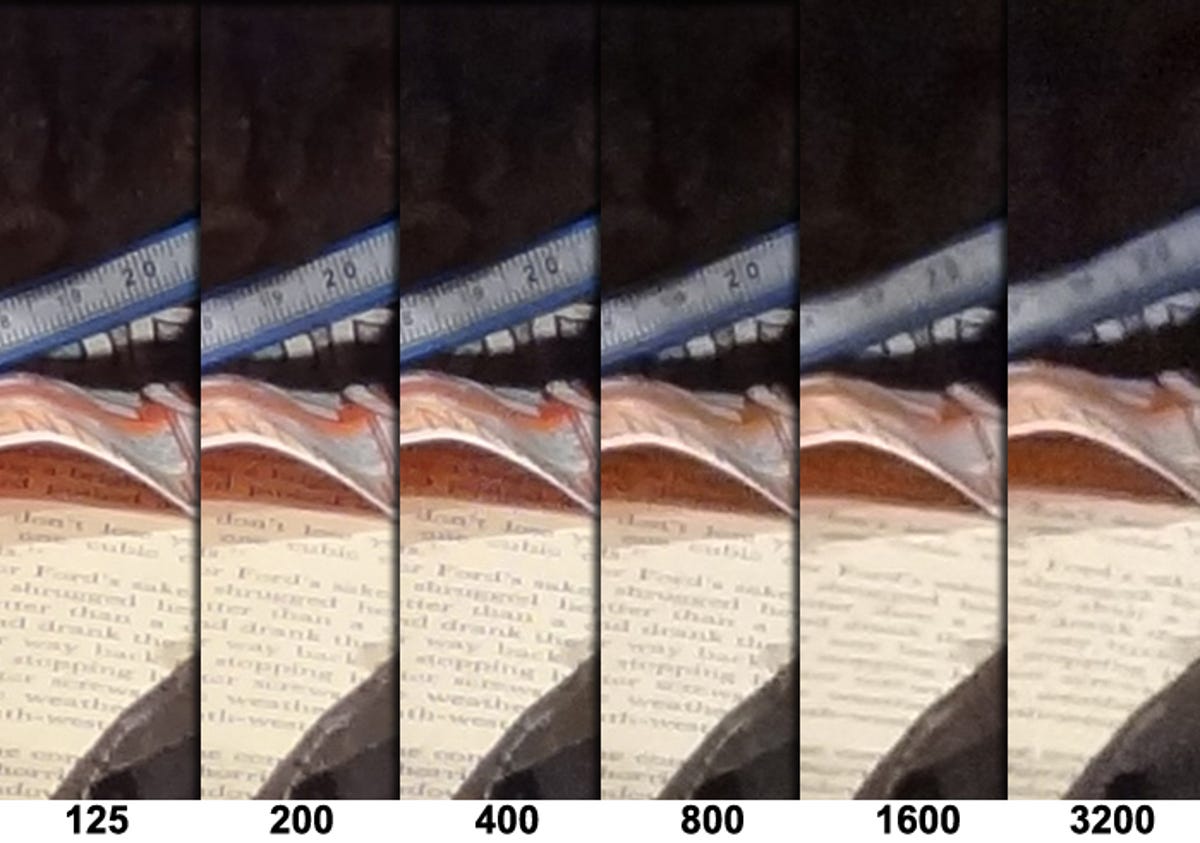
ISO comparison
These are 100-percent crops from our test scene. When viewed at full size, you can see there's little difference from ISO 125 to ISO 400. The only real issue I have is that photos aren't very sharp even at its lowest ISO. Noise reduction kicks in more at ISO 800, which softens details and dulls color. There's a noticeable increase in noise and noise reduction at ISO 1600 and ISO 3200, making colors more washed out and subjects appear painterly; you'll probably want to reserve these two highest sensitivities for emergencies when you need to shoot in low-light conditions or get a faster shutter speed regardless of the results. But, as with all of Sony's cameras with Exmor R sensors, there are shooting options for improving low-light/high ISO shots, so what you see here isn't the whole story.
The 16-megapixel resolution is completely unnecessary and doesn't get you much more room to crop or enlarge. If you're looking at buying this instead of a high-resolution digital SLR, you'll be disappointed--especially at higher ISO sensitivities. That said, prints at 8x10 at ISO 800 with the lens fully extended still looked good, just soft and painterly. Overall, anyone looking for a snapshot camera for regularly making 8x10 prints or smaller or viewing on a TV or computer screen should be more than satisfied with the HX7V.
Low-light performance
There are a few ways to take low-light shots with the HX7V. In this example, I took shots using Program mode, Superior Auto, and the Handheld Twilight scene mode. All of these were taken at ISO 800. Program mode only takes a single shot, and while that resulted in more noise, it's also a bit sharper than the others. Superior Auto used a multishot mode like the Handheld Twilight, where it takes several shots and combines them into one photo with reduced noise and blur from hand shake. Handheld Twilight cleaned up the noise a bit, but the white balance is off; it performs better with outdoor scenes.
If you take a closer look you can see the differences more clearly. Regardless of method, if you're using the photos at small sizes and not heavily cropping them, all of them work well for capturing low-light subjects. However, all of the multishot modes require still subjects and shouldn't be used with anyone or anything moving.
Macro
Color
Color is excellent from the HX7V. Though blues and reds may not be as accurate as other colors, they are bright and vivid. Plus, they're consistent up to ISO 800; above that, things get slightly washed out and muddy-looking.
Exposure and white balance are good as well, though highlights tend to blow out. The camera has shooting options for helping with those things, though.
Burst shooting
Manual mode
Zoom range
Lens distortion
Fringing
Backlight Correction HDR mode
Background Defocus mode
Intelligent Sweep Panorama
HR Panorama
But wait, there's more! Consumers must've been complaining that the regular panorama shots from Sony's cameras were too small. Sony answered back with a high-resolution option that uses the full 16-megapixel camera resolution to produce a higher quality panorama photo. Just like the regular iSweep Panorama mode, you just sweep the camera horizontally across your scene, but this time the camera is turned vertically.
The results are better, but the final file is huge with a resolution of 10,480x4,096 and 20MB (at least for this photo). I reduced the file size so you can take a closer look.

